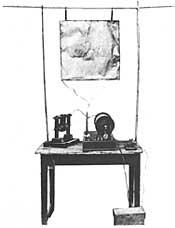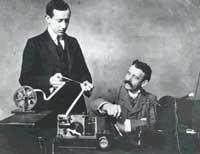Transatlantic communications 100 years

On 12 December 1901 Guglielmo Marconi fulfilled his dream of transmitting by wireless telegraphy the signal from Europe to America and communicating the two continents. Although today it is the basis of telecommunication, at that time no one believed it was possible, but the greed of the Italian proved otherwise.
A few years after Marconi's birth, Hertz showed that light waves are electromagnetic waves, seeing that the reflection and refraction of electromagnetic waves were like those of light. This discovery surprised the young Marconi, who at age 21 began to experiment on his own.
He first started working in his house camera and tried to transmit signals over short distances. From one end to the other of the attic, first, and from house to garden afterwards. In this way, he managed to send wireless signals two and a half kilometers away, becoming the inventor of the first practical wireless telegraphy system.

By then I was thinking of communicating America and Europe. In southeastern England (Poldhu) established a high-powered transmitter and, across the Atlantic, a wave detection station. Everything was ready for 1901, and against all forecasts, on December 12, Marconi and his assistant listened with a net pi-pi signal morse coming from England. With this sound that expressed "S", Marconi managed to overcome an approximate distance of 3,600 km.
First it allowed the development of the radio and, later, many other inventions related to telecommunications. In 1909 he received the Nobel Prize in Physics, as with his essays Marconi took the first step in the construction of the global communications network.
Buletina
Bidali zure helbide elektronikoa eta jaso asteroko buletina zure sarrera-ontzian


